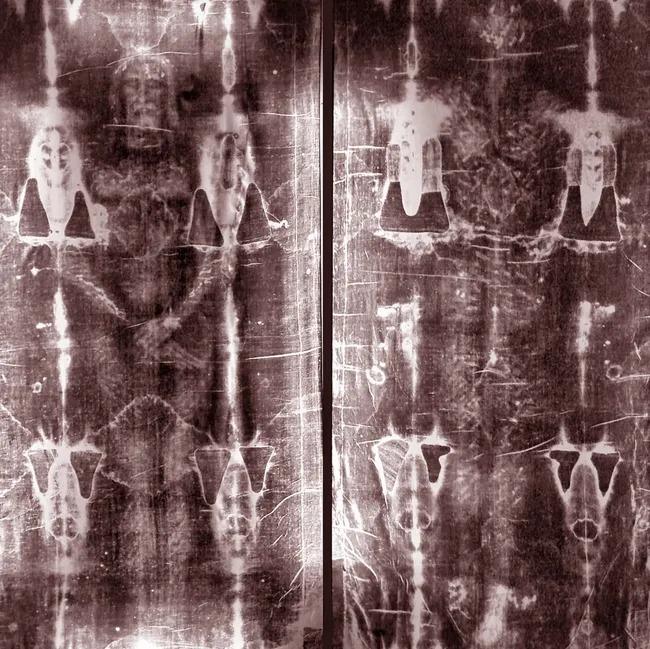Turin’s Shroud: A Relic of Endless Study
The Shroud of Turin is believed by some to be the burial cloth of Jesus of Nazareth. The cloth is currently on display at the Cathedral of St. John the Baptist in Turin, Italy. (Image credit: Universal History Archive/UIG via Getty Images)
Some say the Shroud of Turin is Jesus’ burial cloth, others a medieval forgery. Now a new study using modern forensic techniques suggests the bloodstains on the shroud are completely unreal, supporting arguments that it is a fake.

The Shroud of Turin is an ancient linen cloth about 15 feet long by 4 feet wide (4.4 by 1.1 meters) bearing the image of what appears to be the body of a crucified man. Displayed in the Cathedral of St. John the Baptist in Turin, Italy, it is one of many shrouds claimed over the centuries to be the only true burial cloth of Jesus.
But in 1988, scientists carbon-dated the shroud’s origins to between 1260 and 1390 AD, backing up claims that it is simply a hoax, as Jesus’ life is thought to have come to an end in 33 AD. A forgery remains a hotly debated issue. [Religious Mysteries: 8 Alleged Relics of Jesus]
To help shed light on this controversy, researchers sought to use modern forensic techniques on the Shroud. They focused on blood stains from the supposed crucifixion wounds on the cloth, with the aim of reconstructing the most likely position of the arms and body within the shroud.
Scientists applied blood (both human and synthetic) to a living volunteer to see how the blood ran in rivulets down his skin as he lay with his arms and body in various positions. Furthermore, Jesus was supposedly stabbed in the side with the Holy Lance as he hung on the cross, according to the Gospel of St. John. As such, to mimic a lance wound, researchers placed a sponge on a wooden board, soaked it with synthetic blood, and stuck this fake lance into the side of a mannequin to see how the blood ran down the body. They finally compared all of these bloodstain patterns to those seen on the shroud.
They found that if one examined all the bloodstains on the shroud together, “one realised that they cannot be real bloodstains from a person who was crucified and then buried in a tomb, but rather hand-made by the artist who created the shroud,” lead study author Matteo Borrini, a forensic anthropologist at Liverpool John Moores University in England, told Live Science.
For example, two short rivulets of blood on the back of the left hand on the shroud are only consistent with a person standing with arms at a 45-degree angle. In contrast, the forearm bloodstains found on the shroud correspond to a person standing with arms almost vertical. A person could not be in both of these positions at the same time.
Scientists found that blood stains on the front of the chest matched those from a spear wound. However, stains on the lower back, which supposedly came from the spear wound while the body was lying face up, were completely unreal, they said.

“If you look at the bloodstains as a whole, just as you would when working at a crime scene, you realize that they contradict each other,” Borrini said. “This points to the artificial origin of these stains.”
Ultimately, this research shows “how we can apply forensic techniques not only to new forensic cases, but also to old mysteries,” Borrini said.
The scientists detailed their findings online July 10 in the Journal of Forensic Sciences.
Originally published on Live Science.
Charles Q. Choi is a contributing writer for Live Science and Space.com. He covers all things human origins and astronomy, as well as physics, animals, and general science. Charles holds a Master of Arts from the University of Missouri-Columbia School of Journalism and a Bachelor of Arts from the University of South Florida. Charles has visited every continent on Earth, drinking rancid yak butter tea in Lhasa, snorkeling with sea lions in the Galapagos, and even climbing an iceberg in Antarctica.






